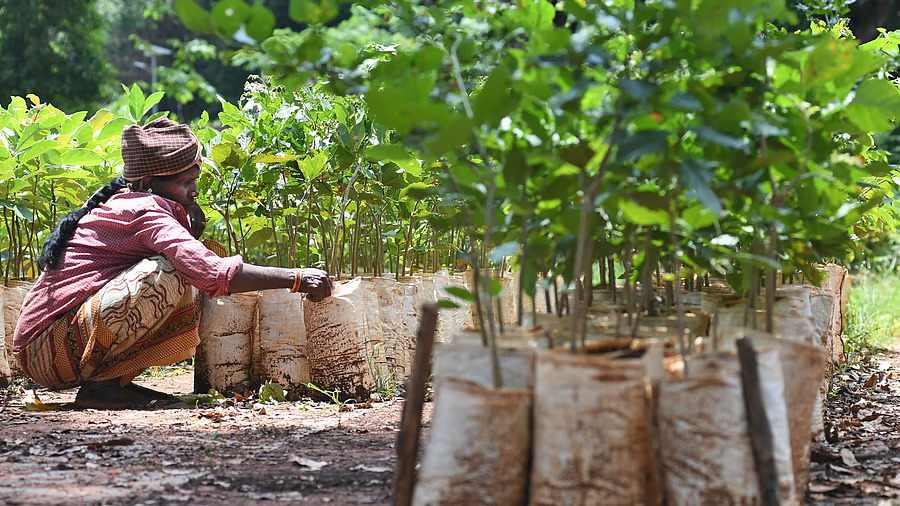Once revered as the “Garden City of India,” Bengaluru today stands at a precarious crossroads between rapid urbanization and environmental degradation. The city’s ambitions to become a sustainable, green metropolis are being undermined by a host of systemic issues—ranging from flawed urban planning and vanishing green cover to poorly executed infrastructure projects. Despite repeated assurances, high-level planning documents, and bold green declarations, Bengaluru’s ecological future hangs in the balance.
This blog explores the widening cracks in Bengaluru’s green goals, identifying where the city’s environmental aspirations are faltering, what this means for its residents, and what can be done to set things right.
From Garden City to Concrete Jungle: What Went Wrong?
In recent decades, Bengaluru has grown into India’s Silicon Valley, attracting talent, investment, and infrastructure development at breakneck speed. But this growth has come at a cost. The once-abundant tree-lined avenues, serene lakes, and open spaces have given way to high-rise buildings, road-widening projects, and mega transport corridors.
Despite claims of “green development,” several key issues show that the city’s growth has been largely unmindful of ecological consequences:
-
Unregulated construction: Rampant construction in ecologically sensitive zones has led to the destruction of lakes, wetlands, and urban forests.
-
Loss of tree cover: Mature trees are routinely felled for road and metro projects, with promises of compensatory planting rarely fulfilled.
-
Encroachment of commons: Public spaces like parks, tanks, and even stormwater drains are being encroached upon or commercialized.
-
Displacement of biodiversity: Urban sprawl has driven away wildlife species once common in the region—like jackals, foxes, and numerous bird species.
The Disconnect Between Policy and Implementation
Over the years, numerous environmental policies and frameworks have been drafted to protect Bengaluru’s ecology. However, implementation continues to lag behind. Some of the most glaring gaps include:
1. Tree Felling vs. Tree Planting
For every infrastructure project approved, hundreds of trees are chopped down. Authorities claim that they plant five or ten saplings for each tree removed. But independent audits have shown that survival rates of these saplings are dismally low due to poor planting techniques, lack of maintenance, and unsuitable locations.
2. Lack of Transparency
There is little public transparency in how green projects are monitored. Tree felling permissions, lake development plans, and compensatory afforestation often occur without adequate citizen consultation or scrutiny.
3. Metro and Infrastructure Projects
Mega projects like the metro rail have been a double-edged sword. While they promise cleaner public transport, their construction has resulted in massive tree felling, dust pollution, and ecological disruption in several sensitive areas. In many locations, the construction zones cut through forest patches, parks, and even lake ecosystems.
The Disappearing Lakes and Wetlands
Bengaluru was once home to over 280 lakes—many of which were interlinked, forming a natural water management system. Today, only around 80 remain, and most of those are polluted, encroached, or reduced to stagnant waterbodies.
Key concerns include:
-
Sewage inflow into lakes, making them toxic and killing aquatic life.
-
Construction debris and encroachments choking the lake boundaries and feeder canals.
-
Privatization of lakes, where public commons are handed over to private players in the name of beautification, often restricting local community access.
Rising Pollution and Climate Risks
Environmental degradation is not just a matter of aesthetics—it has real health and climate consequences. Bengaluru faces:
-
Poor air quality, especially in traffic-clogged zones and construction areas.
-
Urban heat island effect, where built-up areas are significantly hotter than surrounding rural areas due to reduced vegetation.
-
Water scarcity, due to the depletion of groundwater and lake systems.
-
Flash floods, as natural drainage systems are blocked or overbuilt.
These are not isolated events—they are symptoms of deeper ecological stress and poor planning.
Citizen Movements: Fighting to Save the Green Soul of the City
In the face of this environmental erosion, Bengaluru’s residents have not remained silent. Civil society groups, resident welfare associations, and eco-activists have been at the forefront of numerous battles to save the city’s green assets.
Examples include:
-
Legal interventions to halt tree felling without public consultation.
-
Tree mapping drives to track the health and presence of urban trees.
-
Lake rejuvenation efforts, often led by local citizen groups working in partnership with civic bodies.
-
Protests against flyovers and elevated corridors planned through parks and dense neighborhoods.
These citizen-led movements show the resilience of Bengaluru’s ecological conscience, even when governance fails.
The Way Forward: Can Bengaluru Still Reclaim Its Green Identity?
Despite the challenges, it is still possible for Bengaluru to reclaim its legacy as a green city—but only if action is immediate, inclusive, and sustained.
1. Strengthening Urban Ecology Planning
Urban development plans must integrate ecological parameters as non-negotiable. Tree surveys, biodiversity assessments, and environmental impact studies must guide every major project.
2. Enforcing Accountability
Government departments and contractors must be held accountable for environmental damages. There should be penalties for unauthorized tree felling, lake pollution, and compensatory afforestation failures.
3. Protecting Urban Forests and Biodiversity Zones
Areas like Turahalli, GKVK, and Jarakabande forests must be declared protected zones with no compromise for real estate or infrastructure expansion.
4. Transparent Citizen Participation
Green governance must become participatory. Residents should have a voice in urban planning through ward committees, green audits, and public hearings.
5. Investing in Green Infrastructure
From rainwater harvesting and green roofs to permeable pavements and tree-lined cycling lanes, Bengaluru must innovate to blend ecology with urban functionality.
Conclusion: Will Bengaluru Choose Concrete or Canopy?
The cracks in Bengaluru’s green goals are real and growing wider by the day. Yet, these cracks also let in light—a chance for reflection, course correction, and community-driven revival. As one of India’s most iconic cities, Bengaluru has both the resources and the spirit to lead the way in sustainable urban living.
The question now is not whether the damage can be undone—but whether there is enough collective will to prevent further damage and chart a greener, wiser path forward.
Our Services – FACTS Transcripts
We at FACTS Transcripts assist in various services, including:
- Mark Sheet Transcripts
- E-Transcripts
- Duplicate Mark Sheets & Degree Certificates
- Medium of Instructions Certificates
- Attestations
- HRD Attestation / Apostille Services
- ECA (Educational Credentials Assessment)
Trusted by leading global verification organizations, including WES, IQAS, PEBC, NDEB, NASBA, CAPR, NZQA, ICAS, NCESS, ICES, ECE, eduPASS, ACEI, GCEUS, Comparative Education Services, NNAS, NCA, SAQA, QMAS, FORAC, Australian Pharmacy Council, and more.
FACTS Transcripts – The preferred choice for university document verification worldwide. We ensure a hassle-free process for obtaining your transcripts.











